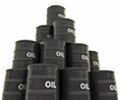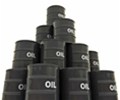

Saudi Arabia and the UAE, the first and third-biggest oil and gas producers in OPEC, are vying to become blue hydrogen and ammonia exporters as the two Gulf states plot oil production capacity hikes that they want to intertwine with a clean energy brand.
Saudi Aramco, the world’s No. 1 listed oil and gas company, and Abu Dhabi National Oil Co., the UAE’s biggest energy producer, are leading efforts in their countries to become blue hydrogen and ammonia leaders.
Aramco, which currently has an oil production capacity of 12 million b/d, is angling to increase it by 1 million b/d in the near future and ADNOC is working on ramping up its production capacity to 5 million b/d by 2030 from around 4 million b/d currently.
“Ultimately this is about shifting with the times and meeting market demand for lower-carbon energy,” said Ben Cahill, senior fellow, Energy Security and Climate Change Program, at the US-based Center for Strategic and International Studies. “Aramco and ADNOC have huge absolute emissions — especially Aramco — but want to reduce emissions intensity and decarbonize operations as much as they can.”
Aramco’s chief technology officer Ahmed al-Khowaiter hopes by 2030 to have enough hydrogen market demand for the company to cater to it at a world scale. Aramco has a target volume of hydrogen it will be able to produce by then, but the company will not publicly disclose what that number is, Khowaiter said on June 27 at a media briefing.
CCUS projects
Aramco and ADNOC are expected to leverage their carbon capture utilization and storage projects. The Uthmaniyah facility in Saudi Arabia and Reyadah in the UAE can each capture 800,000 mt/year of CO2 and that CO2 can be potentially used to produce blue hydrogen. However, ADNOC plans to expand its CCUS capacity sixfold to 5 million mt of CO2 by 2030.
Aramco got a leg up in September when it exported the world’s first blue ammonia shipment — from Saudi Arabia to Japan — for use in power generation.
However, in January, ADNOC struck the first fuel ammonia cooperation deal with Japan’s Ministry of Economy, Trade and Industry as Tokyo intends to develop its supply chain of blue ammonia possibly in the Middle East by the late 2020s. Japan wants to achieve carbon neutrality by 2050, with hydrogen and ammonia accounting for about 10% of the power generation mix in 30 years, from zero currently.
Ammonia — three hydrogen atoms and one nitrogen and, thus, about 18% hydrogen by weight — releases no carbon emissions when combusted in a thermal power plant.
“In the region, there is clear technological know-how to enable a renewable and low-carbon hydrogen supply chain,” said Olivia Azadegan, commercialization and policy manager for Clean Air Task Force.
Investments
Aramco and ADNOC are likely to use their connections to woo investments to their hydrogen and ammonia projects.
ADNOC has attracted Fertiglobe, a joint venture with Dutch chemicals company OCI, to invest in the national oil company’s blue ammonia project that will produce 1 million mt/y of the commodity.
“I wouldn’t be surprised to see Aramco and ADNOC enter into partnerships,” said Frank Wouters, chairman of the MENA Hydrogen Alliance. “In the Gulf, we have the lowest cost solar power in the world, and you have the national oil companies’ know-how to make gases at scale. Now, they already make ammonia, so making clean ammonia is not very different.”
Both the UAE and Saudi Arabia also have ambitions to produce green hydrogen and ammonia, which are derived by using renewable energy.
Saudi Arabia’s planned zero-carbon city Neom in July formed a joint venture with New York-listed Air Products and Riyadh-based ACWA Power to create a $5 billion green hydrogen project, the world’s largest. It is expected to produce about 1.2 million mt/y of ammonia by 2025. Neom’s head of energy told S&P Global Platts in February that the city may sign more deals to create a hydrogen ecosystem for its power needs.
Hydrogen alliance
In the UAE, ADNOC, the country’s energy ministry, and two sovereign wealth funds — Mubadala Investment Co. and ADQ — joined hands this year to form an alliance to develop green and blue hydrogen projects.
Saudi Arabia and the UAE are leveraging different strengths and institutions to achieve their targets.
“Aramco has a big head start due to its engineering capacity and existing infrastructure,” said Cahill. “Abu Dhabi created a hydrogen alliance that will pull in Mubadala and ADQ, which have the capacity to invest in the hydrogen value chain and help bolster demand.”
However, the UAE has a greater ability to produce green hydrogen and ammonia, given its bigger renewable energy installed capacity, which was 2.54 GW at the end of 2020, compared with Saudi Arabia’s 413 MW, based on figures from the International Renewable Energy Agency.
Source: Platts